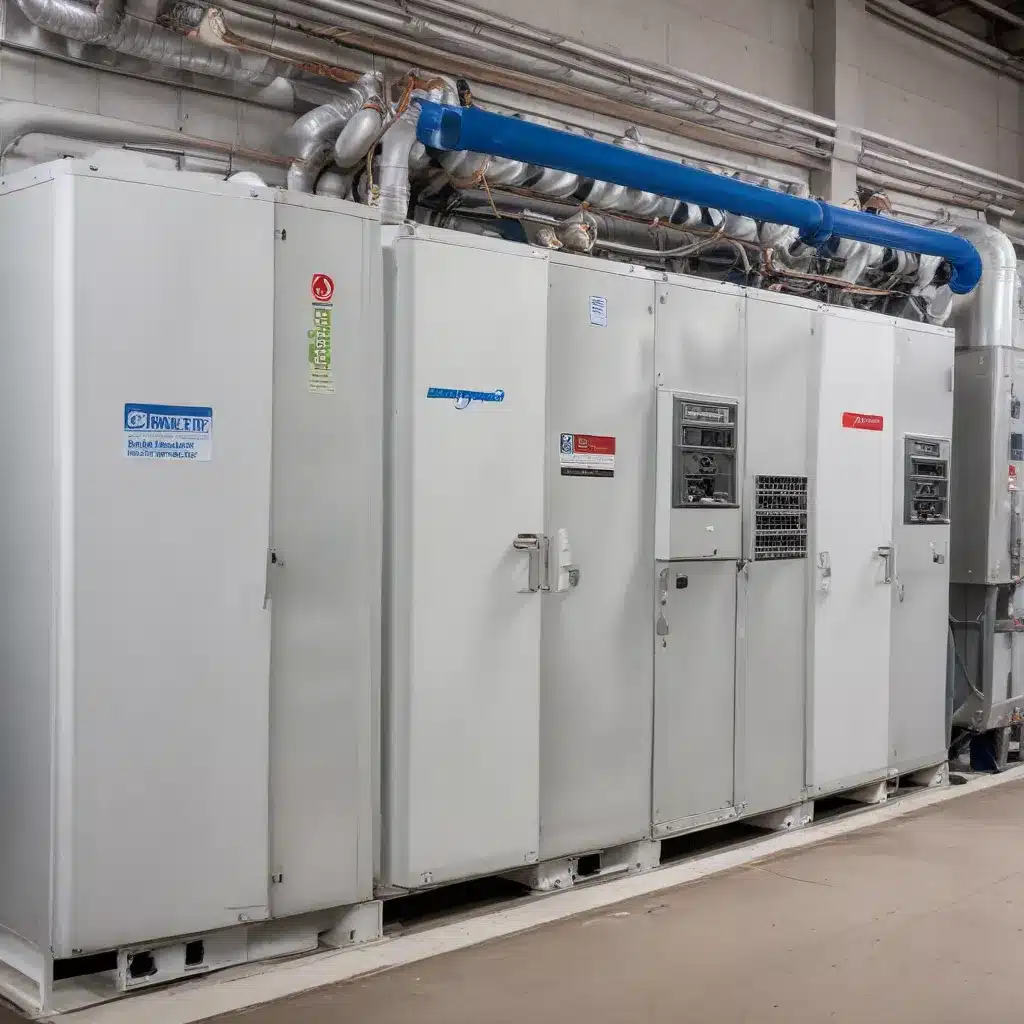
As the global demand for refrigeration grows, driven by expanding cold chain logistics and the ever-increasing need to keep our food, medicines, and environments cool, the environmental impact of these systems has come under immense scrutiny. Refrigerants, the specialized chemicals that enable the cooling process, have long been identified as major contributors to greenhouse gas emissions and ozone depletion. However, the refrigeration industry is now at a pivotal juncture, with a surge of innovative low-GWP (global warming potential) alternatives emerging to replace the high-impact refrigerants of the past.
The Environmental Impact of Refrigeration
Refrigeration systems, whether in our homes, businesses, or vast industrial facilities, play a vital role in preserving our quality of life. Yet, the environmental cost of these essential systems has become increasingly difficult to ignore. The primary culprits are the refrigerants themselves, synthetic chemicals that are essential for the refrigeration cycle but have significant drawbacks.
Greenhouse Gas Emissions
Many of the commonly used refrigerants, such as hydrofluorocarbons (HFCs), have an exceptionally high GWP, meaning they trap far more heat in the atmosphere than carbon dioxide. When these refrigerants leak from aging equipment or are improperly disposed of, they contribute to global warming at an alarming rate. In fact, the refrigeration industry as a whole is responsible for an estimated 10% of global greenhouse gas emissions.
Energy Efficiency
The energy required to power refrigeration systems also has a substantial environmental impact. Traditional systems often rely on energy-intensive compressors and inefficient heat exchange processes, translating to high electricity consumption and associated emissions from power generation.
Ozone Depletion
In the past, the use of chlorofluorocarbons (CFCs) and hydrochlorofluorocarbons (HCFCs) as refrigerants caused significant damage to the Earth’s ozone layer. While these ozone-depleting substances have largely been phased out, their legacy continues to linger, underscoring the need for more sustainable alternatives.
Sustainable Refrigerant Alternatives
Faced with growing environmental concerns and increasingly stringent regulatory pressures, the refrigeration industry has responded with a surge of innovative low-GWP refrigerant alternatives. These solutions aim to provide the cooling power we need while minimizing the environmental impact.
Natural Refrigerants
Natural refrigerants, such as carbon dioxide (CO2), ammonia (NH3), and propane (R-290), have emerged as promising alternatives. These substances have negligible or zero GWP, making them significantly less harmful to the environment than their synthetic predecessors. Additionally, many natural refrigerants offer improved energy efficiency, further reducing the carbon footprint of refrigeration systems.
Synthetic Refrigerants
While natural refrigerants are gaining traction, the industry has also seen the development of lower-GWP synthetic refrigerants, known as hydrofluoroolefins (HFOs). These compounds seek to balance environmental performance with operational compatibility, providing a transitional solution as the market shifts towards more sustainable alternatives.
Refrigerant Regulations
Governments around the world have responded to the environmental concerns surrounding refrigerants by implementing increasingly stringent regulations. In the United States, the Kigali Amendment to the Montreal Protocol and the American Innovation and Manufacturing (AIM) Act have set ambitious targets to phase down the production and use of high-GWP HFCs. Similarly, individual states, such as California, have enacted their own legislation to limit the use of certain refrigerants.
Refrigeration System Design
As the refrigeration industry embraces these sustainable alternatives, the design of the systems themselves has also evolved to optimize performance and minimize environmental impact.
Refrigeration Cycle
Transcritical CO2 systems, for example, utilize the unique properties of carbon dioxide to achieve efficient cooling without the need for high-GWP refrigerants. These systems operate at higher pressures but can outperform traditional HFC-based systems in certain climate conditions.
Compressor Technology
Advancements in compressor design, such as the introduction of scroll and screw compressors, have improved the energy efficiency of refrigeration systems. These technologies, coupled with variable-speed capabilities, allow for more precise control and reduced energy consumption.
Heat Exchanger Optimization
Manufacturers have also focused on enhancing the heat exchange processes within refrigeration systems. Innovations in microchannel heat exchangers and evaporative condensers have led to improved thermal transfer, further boosting efficiency and reducing the environmental impact.
Refrigerant Selection Criteria
When choosing a refrigerant for a new or retrofitted system, facility managers and HVAC professionals must consider a range of factors to ensure the optimal balance of environmental sustainability, energy performance, and safety.
Environmental Factors
The global warming potential (GWP) and ozone depletion potential (ODP) of a refrigerant are paramount considerations. Selecting a low-GWP or natural refrigerant can significantly reduce the carbon footprint of a refrigeration system.
Energy Performance
The efficiency of the refrigerant itself, as well as its compatibility with the system’s design, can have a substantial impact on the overall energy consumption and operational costs. Factors such as pressure-temperature characteristics and heat transfer properties must be carefully evaluated.
Safety Considerations
Refrigerant safety is another critical factor, particularly as the industry explores flammable (A3) and mildly flammable (A2L) alternatives. Proper training, equipment design, and compliance with safety standards are essential to ensure the safe handling and use of these refrigerants.
As the refrigeration industry navigates this dynamic landscape of environmental regulations, technological advancements, and evolving consumer demands, the focus on sustainable refrigerant alternatives has never been more crucial. By embracing low-GWP solutions and optimizing system design, facility managers and HVAC professionals can play a pivotal role in minimizing the environmental impact of refrigeration while maintaining the essential cooling capabilities our modern world requires. To learn more about sustainable refrigeration options, visit Airgas Refrigerants.

